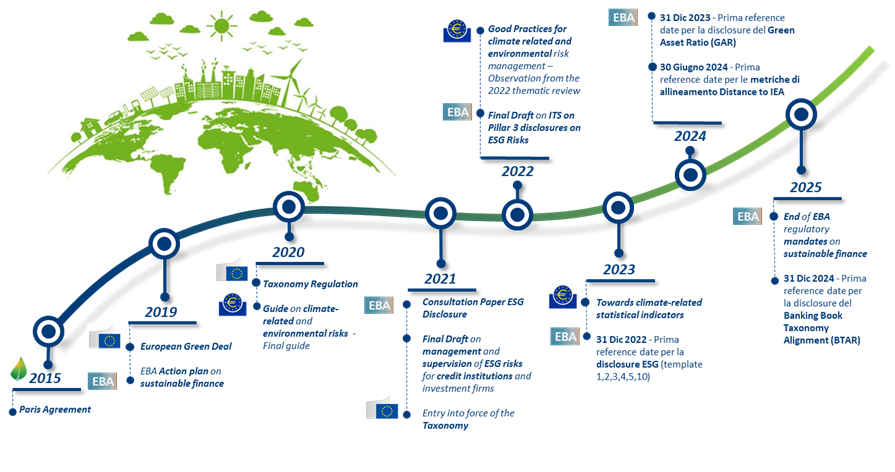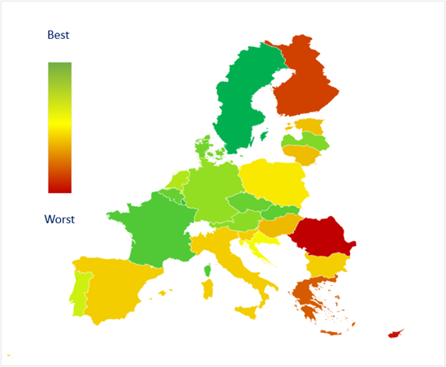As environmental concerns intensify and societal expectations shift, businesses are under increasing pressure to demonstrate their commitment to sustainable practices.
In today's landscape, sustainability has emerged as a critical factor influencing a company's ability to secure financing.
But what does sustainability mean for business credit, and why is it becoming such a significant determinant of a company's financial health?
Towards Sustainable Finance
Investors, lenders, and governments are increasingly recognizing that environmental, social, and governance (ESG) factors have a direct impact on a company's long-term performance. Businesses that prioritize sustainability turn out to be better positioned to manage risks, seize opportunities, and build lasting value.
Companies with strong sustainability practices are often better equipped to manage risks associated with climate change, resource scarcity and social unrest. By addressing these challenges proactively, they can reduce their exposure to financial losses and enhance their creditworthiness.
A strong reputation for sustainability can attract customers, investors, and top talent. This can lead to increased brand loyalty, improved market share, and a lower cost of capital.
Moreover, regulators worldwide, and UE in particular, are introducing rules and guidelines to promote sustainable business practices in which the financial sector is called to play a major role.

Authorities are requiring banks to progressively integrate ESG factors into credit processes, urging their inclusion in rating systems and even hinting at the possibility, in the not-so-immediate future, of capital requirement relief for credit disbursements marked by a better sustainability profile.
European banks are also required to disclose their Green Asset Ratio (GAR), the indicator that measures the proportion of a bank's exposures to its total assets that are “environmentally sustainable” according to criteria defined by the European Taxonomy, the first “tool” to uniquely classify an economic activity as sustainable according to standards defined by the European Commission.
As a consequence, European banking institutions are integrating taxonomic criteria into their credit processes, so as to strengthen the offering of “green” and sustainable products and improve the value of their GAR.
CRIF ESG framework and CRIF ESG Analytics Score - support financial institutions in managing ESG risks and opportunities
In this complex and changing scenario, CRIF has designed a comprehensive ESG framework including data, analytics, professional services, platforms and consultancy to support financial institutions in managing risks and opportunities related to green finance.
Currently adopted by hundreds of European financial institutions, this framework includes the CRIF ESG Analytics Score, an innovative solution to assess the ESG adequacy of firms across Europe. It leverages both data collected directly from the companies as well as data collected automatically from several public sources and included in the CRIF ESG Data Lake.
By analyzing the ESG scores of a representative sample of EU27 companies1, to demonstrate how standardized evaluation facilitates cross-country comparisons, what emerge is the “Compass Effect”: moving from North to South and from West to East we tend to see a decrease of Environmental Performance which is reflected in the overall assessment. This effect is ascribed to different physical risk considerations and other environmental issues such as greenhouse gas (GHG) emissions, waste management, and energy efficiency.

Looking instead at the different economic sectors, it is notable that the agriculture and transportation sectors have more companies that are not aligned with ESG themes.
In a range from 1 to 5, where a score of 1 indicates the best compliance with ESG principles, while a score of 5 indicates the poorest compliance, companies in the agricultural sector record an average score of 4.5, the transportation sector an average score of 3.9, wholesale and retail trade a score of 3, while manufacturing register an average score of 2.8.

This assessment considers environmental aspects, such as environmental impact, physical risks, and transition risks, as well as the social and governance practices implemented by individual companies.
Greenhouse gas emissions: a key indicator
The production of Greenhouse Gas (GHG) is a key component for understanding a company's alignment with the Environmental aspect2.
At the sectoral level, as demonstrated by different specialized research institutes3, agriculture has a high emission impact. Other sectors at the top of the energy production chain, such as mining and energy production, also exhibit significant emissions
The production of GHG emissions is an important factor not only for assessing a company's environmental impact but also for understanding the transition risk it will face in the coming years. The transition to a low-carbon economy will penalize companies that produce high levels of GHG emissions.
Do not forget S and G!
In the context of CRIF’s ESG analysis, social and governance aspects are also evaluated, providing a comprehensive view of company performance. The focus includes crucial issues such as labor rights, diversity, inclusion, and good governance practices, all of which impact the company’s sustainability and reputation.
For example, the assessment of dimensions such as fatal and non-fatal accidents in the workplace revealed significant differences across sectors and countries. Similarly, the male-to-female employee ratio also highlights strong differences depending on the sector analyzed. The governance dimension also shows significant differences in the gender gap component among companies, often correlating with sectors already heavily characterized by male workers.
In conclusion, CRIF’s ESG Analytics Score highlighted significant differences at both country and sector levels in the main ESG components of European companies. Countries with more advanced industries are exposed to lower risks both in terms of environmental impact and transition risks towards a low carbon economy.
However, individual companies have the opportunity to pursue ESG adaptation paths, also beyond GHG production and other environmental efforts. Social impact within the territory, responsible governance policies, and mitigation of discrimination are characteristics that individual companies can actively pursue to develop further their ESG factors and, as a result, increase their chances of accessing credit.
1 In order to do this, a sample of companies from continental EU27 nations that are representative of the sizes and sectors of each country's industrial profile are chosen
2 CRIF's approach can estimate a company's Greenhouse Gas emissions based on all its activities.
3 EXIOBASE, a global provider of detailed Multi-Regional Environmentally Extended Supply-Use Table and Input-Output Table, reports high CO2 production coefficients per euro of revenue for the agricultural sectors.


